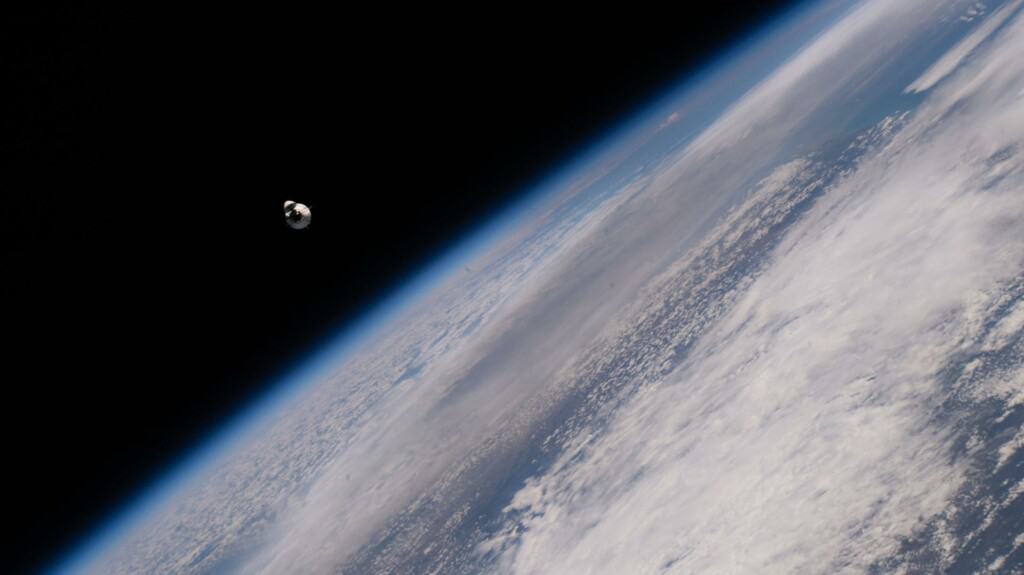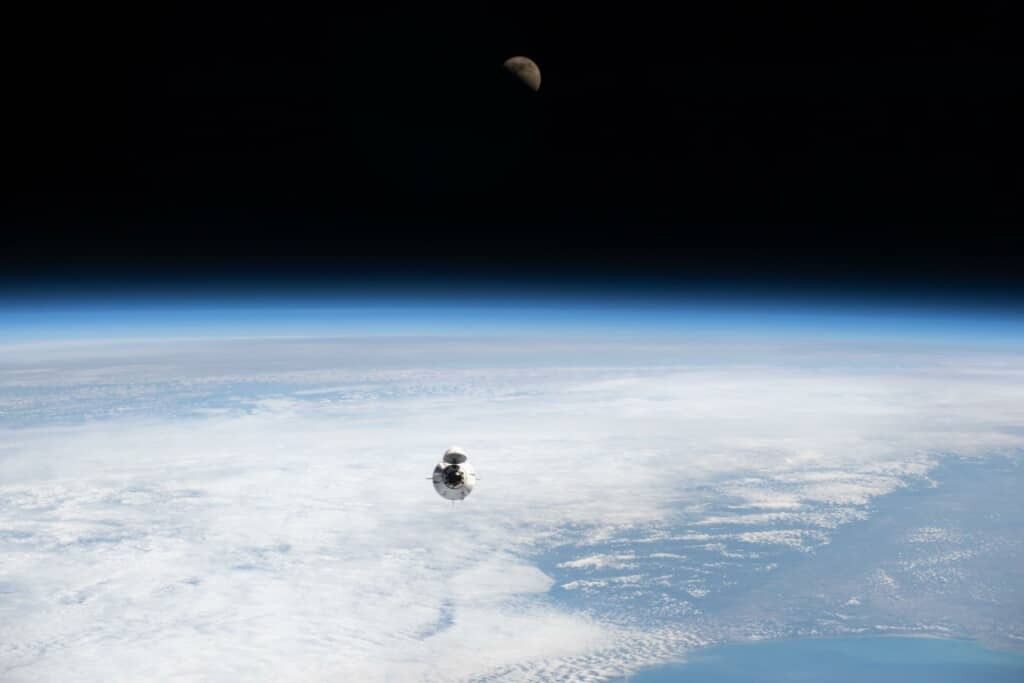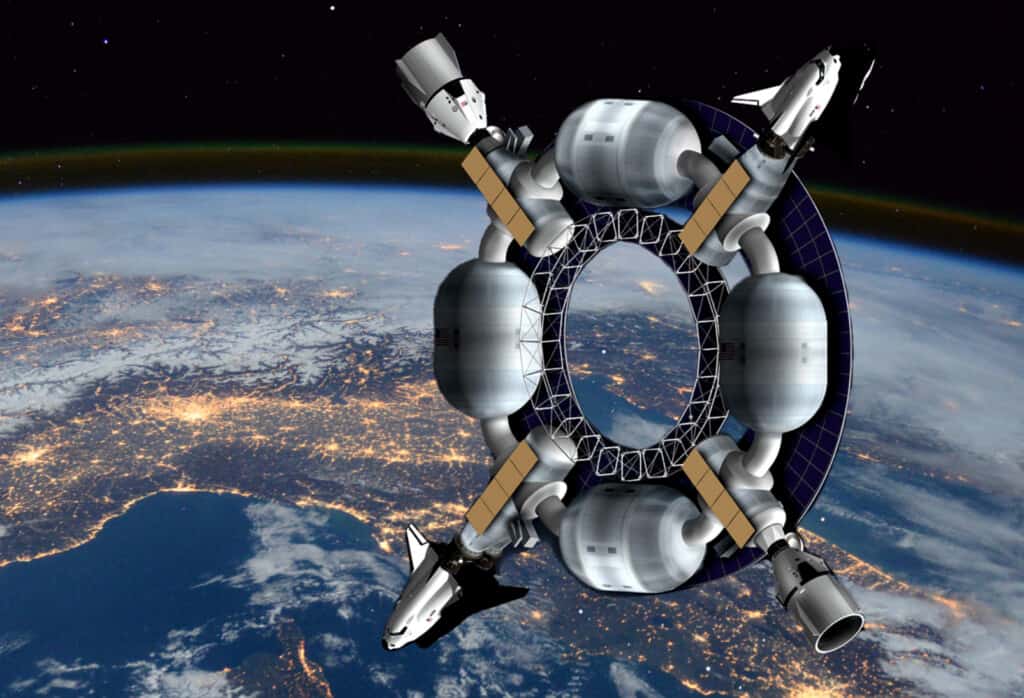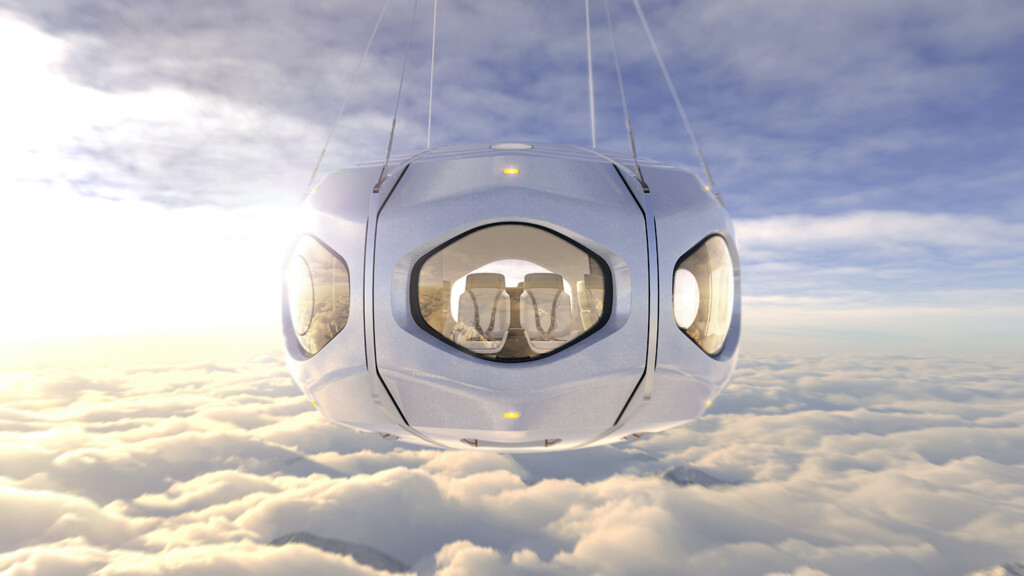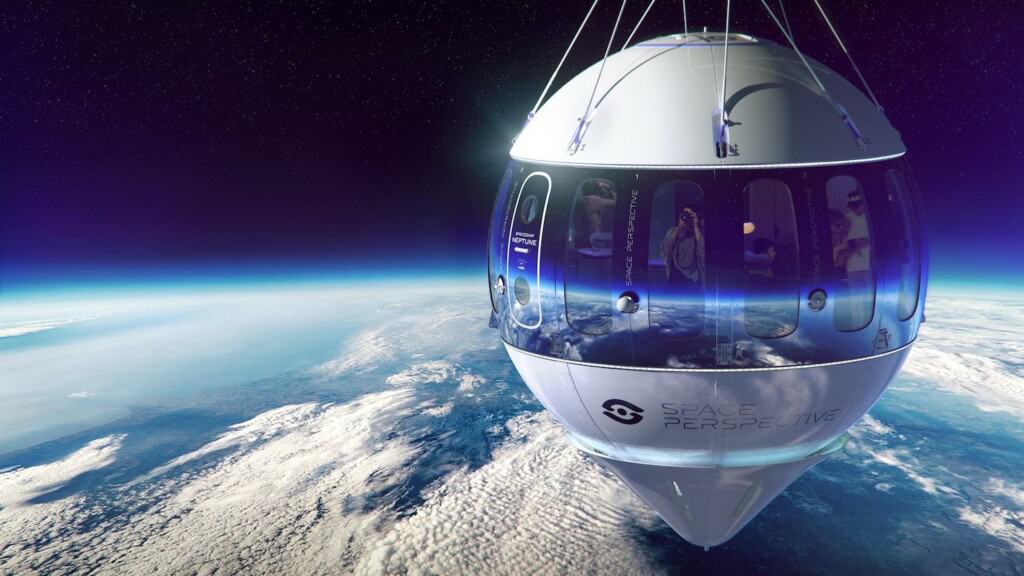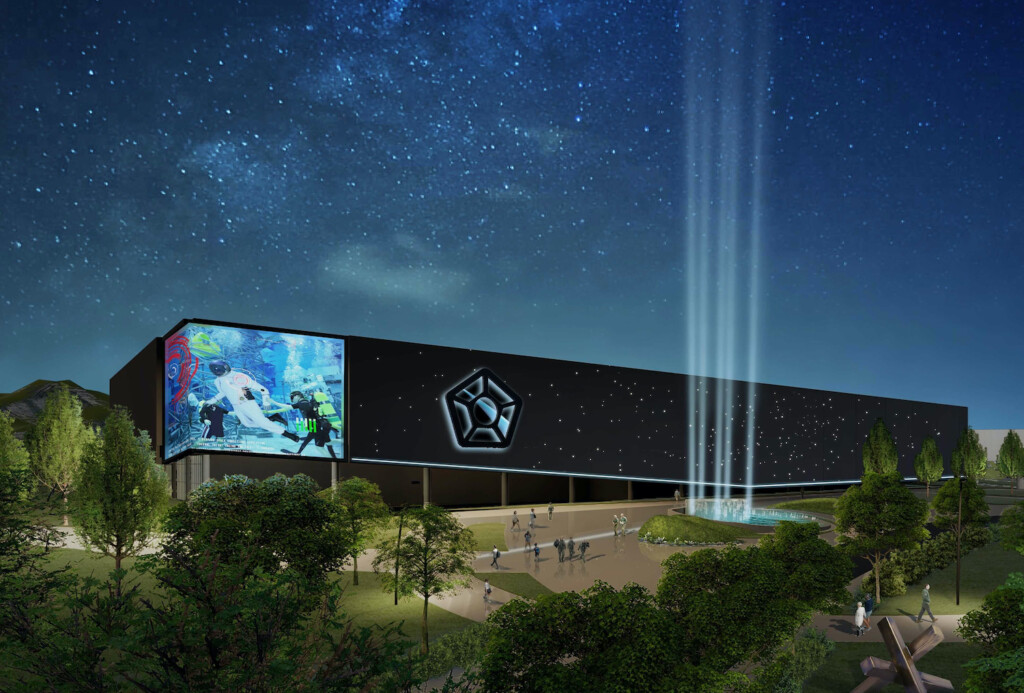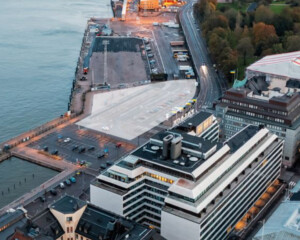With the right amount of money, anyone can buy a ticket to space. For a mere half a million dollars, prosperous passengers can enjoy a suborbital trip. Or, for $50 million, orbital expeditions are on offer. Commercial spaceflight, or space tourism, is currently valued at more than $450 billion. Furthermore, it is expected to grow to more than $1 trillion by 2040.
The U.S. Chamber of Commerce predicts the US will need more than 1.5 million workers to power the space economy. From the first astronomical date to ‘out of this world’ hotels, we explore some of the latest developments in commercial space exploration and space tourism.
Suborbital versus orbital
Let’s begin with the difference between suborbital and orbital space travel. Blue Origin and Virgin Galactic are providing cheaper suborbital trips. Meanwhile, SpaceX and Axiom are taking paying customers on orbital journeys.
Suborbital travel involves taking a spacecraft to the border of space without sending it into orbit. A suborbital flight requires a speed of about 2,200 mph (Mach 3), Forbes explains. Passengers go to between 50 and 70 miles above Earth for a few short minutes. Suborbital excursions are essentially a quick look at space before falling down to Earth again.
Orbital flight, however, involves staying in orbit. This means flying around the planet at very high speeds so as not to fall back down on Earth. Orbital travel requires a speed of 17,500 mph (Mach 23) to place customers into an elliptical orbit above the planet. SpaceX, NASA and Axiom Space are providing commercial spaceflights to the International Space Station, which is 254 miles up. Customers spend days or months in orbit.
There’s a big difference in price. For example, a seat on SpaceX’s orbital spacecraft costs between $50 million and $100 million. For suborbital flights, Virgin Galactic charges $450,000 and Blue Origin around $900,000.
Commercial spaceflight with Blue Origin
Jeff Bezos‘ Blue Origin successfully completed its first space tourism flight on the New Shepard spacecraft in July 2021. New Shepard is named after Mercury astronaut Alan Shepard, the first American to fly to space. It is a reusable suborbital rocket system designed to take astronauts past the Kármán line.

“My expectations were high and they were dramatically exceeded,” said Bezos at the post-flight press conference. “It felt so serene and peaceful. It’s a very pleasurable experience.”
Blue Origin’s efforts include flying astronauts to space on the New Shepard, building “space habitats” and also returning to the surface of the moon. The company has been flight-testing the New Shepard rocket since 2012. In August 2022, Blue Origin completed its sixth human spaceflight and the 22nd flight for the New Shepard spacecraft.
“It’s been just over a year since New Shepard’s first human flight, and we have now flown 31 humans above the Kármán line,” said Phil Joyce, senior vice president of the New Shepard.
Virgin Galactic
Founded by billionaire Richard Branson, Virgin Galactic is an aerospace and space tourism company. Despite getting approval to fly private customers to space in 2021 and selling tickets to the public from February 2022, Virgin Galactic recently delayed the launch of its commercial spaceflight service to the second quarter of 2023.
“While our short-term plans now call for commercial service to launch in the second quarter of 2023, progress on our future fleet continues and many of the key elements of our roadmap are now in place to scale the business in a meaningful way,” Virgin CEO Michael Colglazier said in a statement.
The commercial spaceflight launches from Spaceport America in New Mexico. During the trip, astronauts enjoy a 90-minute journey. This includes out-of-seat weightlessness as well as spectacular views of Earth from the vehicle’s windows.
Last year, the company appointed former Disney Imagineer Joe Rohde to help design the experience journey as the first ‘experience architect’. “I spent 40 years with Walt Disney Imagineering and that word, ‘Imagineering’, refers to the fusion of imagination and engineering,” said Rohde.
“This is one of the most profound things that can happen to you. To go beyond the reaches of the earth, to space, and look back down at it,” he added.
“What Virgin Galactic is doing, in democratizing space travel, has reached a moment where it is about to enter history. It’s happening right here in New Mexico, and it’s very rare to be a person who gets to be in the place, at the time, that history begins.”
SpaceX, Axiom and NASA
SpaceX’s first space tourism mission to the International Space Station took place in April this year and was dubbed Ax-1. Elon Musk’s company, in collaboration with Axiom, put a group of four private citizens into orbit. They got there via a SpaceX Crew Dragon capsule atop one of SpaceX’s Falcon 9 rockets.
“What a historic launch! Thank you to the dedicated teams at NASA who have worked tirelessly to make this mission a reality,” said NASA administrator Bill Nelson. “NASA’s partnership with industry through the commercial cargo and crew programs has led our nation to this new era in human spaceflight – one with limitless potential.”
Ax-1 was the second space tourism flight for SpaceX. This followed the launch of four private citizens on a three-day trip through orbit in September 2021. The third private SpaceX launch, called Ax-2, will send another four customers to the ISS for a 10-day stay.
NASA and Axiom are targeting spring 2023 for the upcoming mission. Ax-2’s passengers launch on top of a SpaceX Falcon 9 rocket and ride a Dragon capsule to and from the orbiting space station, as the Ax-1 crew did. The commercial spaceflight departs from NASA’s Kennedy Space Center in Florida.
“With each new step forward, we are working together with commercial space companies and growing the economy in low-Earth orbit,” said Phil McAlister, director of commercial space at NASA Headquarters.
“In addition to expanding access to orbit for more people, we are also hoping these private astronaut missions will help the industry learn and develop the skillset to conduct such missions, and NASA is benefitting from gaining additional capability, particularly with returning additional cargo from the space station.”
“Axiom Space’s Ax-2 mission builds upon the success of Ax-1, which demonstrated our team’s ability to work collaboratively with our partners at NASA and SpaceX to plan and execute a complex human spaceflight mission,” said Derek Hassmann, Axiom’s chief of mission integration and operations.
“Axiom continues to fund and fly private astronaut missions to the International Space Station to build our expertise and attract new customers in preparation for the launch of our space station, Axiom Station.”
Space station tourism
China has revealed plans to open the country’s Tiangong space station to tourists within 10 years. Tiangong is China’s first fully modular space station. The first module, called Tianhe, was launched into orbit in April 2021 and was occupied by July 2021, Space reports. Tiangong’s final modules should launch later this year.
Yang Liwei became the first Chinese astronaut in 2003. He said tourists visiting Tiangong “is not a matter of technology but of demand”. Liwei said it is likely that people without astronaut training could be launched into orbit.
“And it can be realised within a decade as long as there is such demand,” he said. China is also working on a tourist-friendly reusable spacecraft that could take up to seven people to the station.
Space hotels
Orbital Assembly Corporation’s space hotels could open to cash-rich customers as early as 2025. The space company’s new space tourism concept, called Pioneer, can accommodate 28 people. Its smaller scale means it’s able to open sooner rather than later. Orbital Assembly’s previously-announced Voyager Station, which can hold up to 400 guests, is scheduled to open later in 2027.
“The goal has always been to make it possible for large amounts of people to live, work and thrive in space,” Tim Alatorre, Orbital Assembly’s chief operating officer told CNN Travel. “It’s going to get us the opportunity to have people start to experience space on a larger scale, faster.”
Both stations feature artificial gravity, so guests can eat and drink sitting down and clean themselves in the shower. Voyager Station boasts viewing platforms to see Earth, as well as a bar, spa and gym. There are also 3D holograms, digital wall art and robots. A restaurant serves ‘space classics’ such as Tang and freeze-dried ice cream.
Described as a “sci-fi dream”, the stations are furnished like luxury hotels. Alatorre said the company is “doing everything we can to make space accessible to everyone, not just the wealthy”.
Orbital Assembly has “talked to pretty much everybody” in the private space industry about collaborating because “the one thing that all of these companies are missing is the destination”, he said. “It’s kind of like if you want to go see the Grand Canyon and you drive past it and come right back home.”
Dating in space
LUSSO Dating is perhaps the most exclusive and expensive dating site in the world. It is on a mission to match two singles for the first date in space. LUSSO Dating is the brainchild of David Minns, an online dating entrepreneur and mechanical engineer who has worked in the aerospace and space industry. Minns has even given lectures to rocket scientists.
“LUSSO Dating’s challenge is to connect two like-minded singles who are willing to go into space and have the financial power to back it up,” said LUSSO Dating. “It’s probably advisable to split the bill on this one!”
Commercial spaceflight and World View
Meanwhile, World View has unveiled its designs for a capsule to fly passengers to “the edge of space”. Here, they can “witness the curvature of Earth”. World View is already taking bookings for its commercial spaceflights, beginning in 2024. Tickets cost $50,000 per seat.
Designed by PriestmanGoode, a zero-pressure stratospheric balloon lifts the capsule. This then rises nearly 23 miles above Earth for an experience that lasts between six and eight hours. Flights are to lift off from landmarks including both the Grand Canyon and Great Barrier Reef.
“Unveiling our space capsule prototype is a pivotal moment for the company as we continue to prepare for our first launch from the Grand Canyon in just two short years,” said Ryan Hartman, president and CEO of World View. “We are thrilled to partner with leaders in aerospace design and engineering to bring our vision to life and ensure spaceflight participants enjoy a truly transformative experience.”
Passengers enjoy a gourmet meal and drinks during the flight. Large oval windows offer “impressive views of the Earth’s curvature and its natural wonders”. “Along the journey, passengers will take in the curvature of the Earth, thin blue line of the atmosphere, vast darkness of space and constellations,” said World View.
Space Perspective
Space Perspective is also preparing to lift passengers to the edge of space via its Spaceship Neptune capsule and a giant balloon. The capsule, which is now in production, features the world’s first ‘space lounge’.
“The team has come together to create an amazingly robust, safe, and incredibly elegant and luxurious system for Spaceship Neptune,” said Taber MacCallum, founder, co-CEO and CTO of Space Perspective. “Simplicity and automation are the keys to safety.”
Commercial spaceflights will begin in late 2024. Space tourists will “safely ascend to the edge of space” in the capsule before landing in the ocean. Passengers, as well as the capsule and balloon, are retrieved by ship.
The spacecraft also offers spectacular views through its huge windows. “The pioneering 360-degree windows will be accompanied by satellite imagery and 360-degree cameras to zoom in and out on the incredible vista,” said Dan Window, experience design lead, and Isabella Trani, experience designer.
Tickets cost $125,000 per person. Despite that, Space Perspective’s co-CEO and CXO Jane Poynter told blooloop the team wants to make space as accessible to as many people as possible.
“The first step is reimagining the experience so that more and more people can envision themselves going. That starts with the whole experience of using a space balloon because it is so gentle. You don’t have those high-g forces – you don’t need much training,” she said.
“Next, we reimagined the interior. Instead of being a functional, austere, white interior, we have created a space lounge that, in some regards, feels familiar. Outside the windows is this insane view, but we want people to feel comfortable, almost contemplative, if that’s what they want, as they go to space.”
Commercial spaceflight training
Star Harbor is creating the world’s first private spaceflight training facility for the coming influx of people wanting to experience space tourism. The 53-acre facility, called the Star Harbor Academy, is located in Lone Tree, Colorado. It is being designed by AOA, a leading immersive experience design, production, and project management company, and is due to open in 2026.
Star Harbor will train and certify commercial space travellers through four programmes. These are for operators, users, mission specialists and passengers. The academy offers microgravity flights, a neutral buoyancy facility and a high-gravity centrifuge, as well as land-based and underwater habitats, There are also hypobaric and hyperbaric chambers, simulation labs, and a human performance centre.
It also has a space-themed hotel and entertainment venues including an esports arena. The campus hopes to attract more than two million annual visitors.
Star Harbor is led and founded by Maraia Tanner, an astrophysicist and former aerospace engineer. She says there is an “unprecedented renaissance occurring within the space industry”. The company hopes to “foster a new generation of explorers, innovators, entrepreneurs, educators and technologies to leave a powerful, positive legacy for generations to come”.


